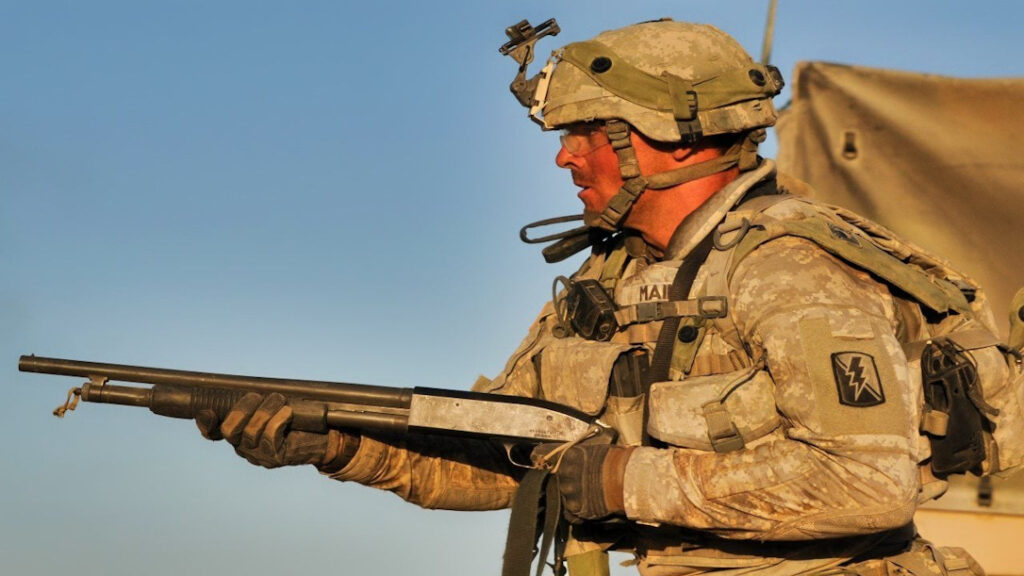We live in an era where it’s seemingly tough to produce anything new, modern, or cutting-edge. It feels like we’ve reached the pinnacle of gun design until we find some new lightweight, tough material, something new ballistically, or something that implements technology into a handgun design. We are always chasing incremental improvements. The use of rotating barrels is one of those supposed incremental improvements.
The improvement is supposed to be a recoil reduction. The question is, is it true? Can a rotating barrel reduce recoil when compared to your typical Browning short recoil system? Pistols with rotating bolts haven’t been especially common, which calls into question why they aren’t popular. If they’re so great, why hasn’t everyone adopted the rotating barrel? Can a company be so audacious as to make false claims?
Especially companies like Beretta? I don’t think so, but I couldn’t say how much recoil rotating barrels cut down. To find out, I found myself a Grand Power P1. Admittedly, I purchased it for more reasons than that, but I was curious about this whole rotating barrel thing.
Advertisement — Continue Reading Below
The World of Rotating Barrels
Browning famously designed the short recoil system, which sits at the heart of most semi-auto handguns. He also designed a rotating barrel system. Browning never produced a pistol with a rotating bolt, but he received a patent for one in 1897. The famed and very sturdy Steyr 1912 used a rotating bolt. The French MAD PA-15 also used the design.
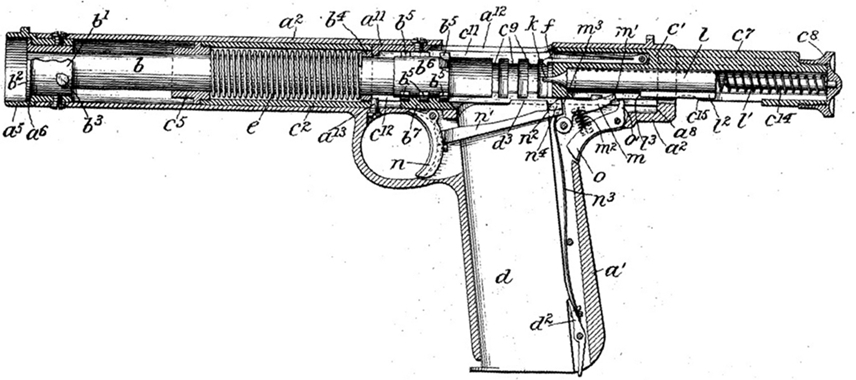
One of the most famous modern examples is the Beretta PX4 storm series. Beretta also uses the same system in the Beretta Cougar. The latest seems to be the S&W 5.7 pistol. Tucked in between those guns sits the Grand Power, a Slovakian pistol series that comes in numerous calibers and uses a rotating barrel.
Advertisement — Continue Reading Below
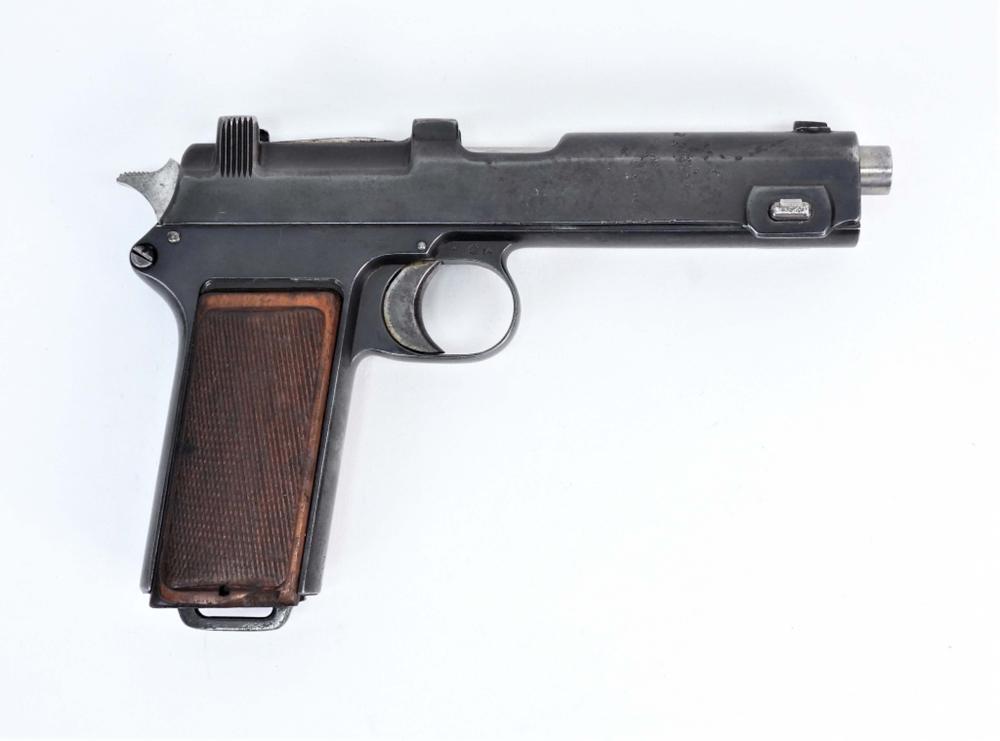
This isn’t a new invention. It seems to come around every now and then and promptly gets forgotten. It’s not a common feature, but it’s not uncommon either. The rotating barrel design has never seemed to have caught on.
Rotating Barrel Vs. Short Recoil
Short recoil is the most common system of operation for semi-auto handguns. It’s been that way since 1911, or at least since the M1911 patents expired. Short recoil works and works well. The idea behind short recoil is simple. When a weapon is fired, the barrel and slide recoil together for a very short distance before the barrel stops, and the slide continues rearward and completes the cycle of operations.
Advertisement — Continue Reading Below
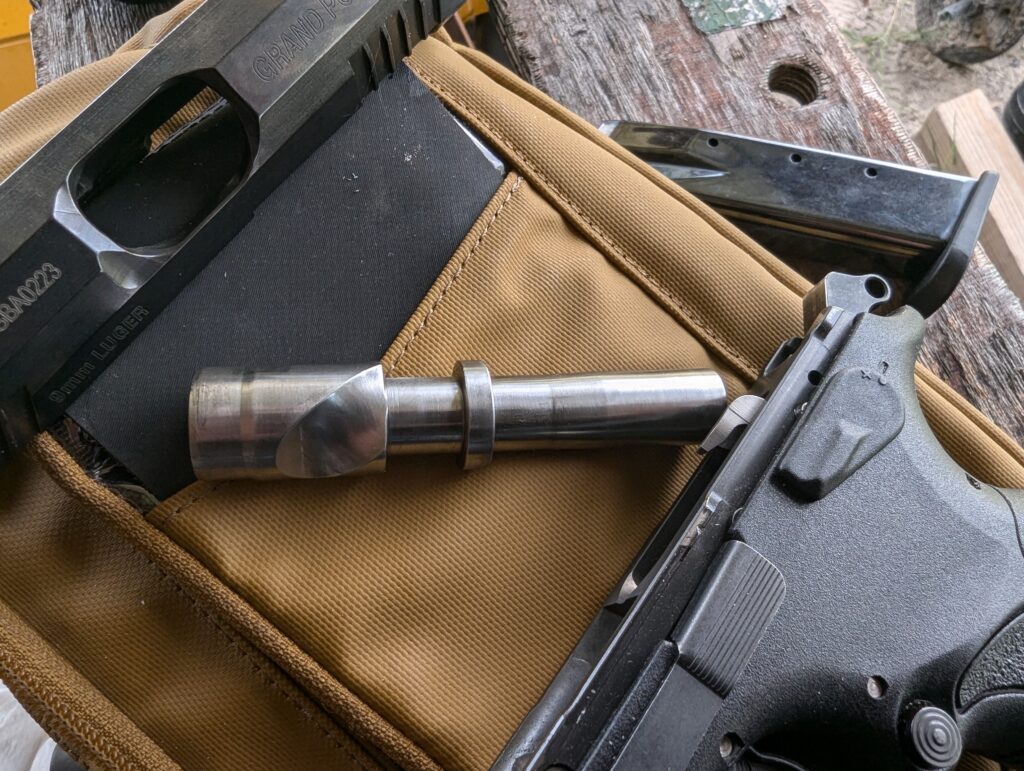
Short recoil guns do reduce recoil, at least compared to a direct blowback gun. The barrel and slide moving together allows for a light slide, which allows light recoil. The rearward motion also absorbs some of the initial recoil. The barrel recoils rearward, and the rear of the chamber cams downward while the tip of the barrel tips upward.
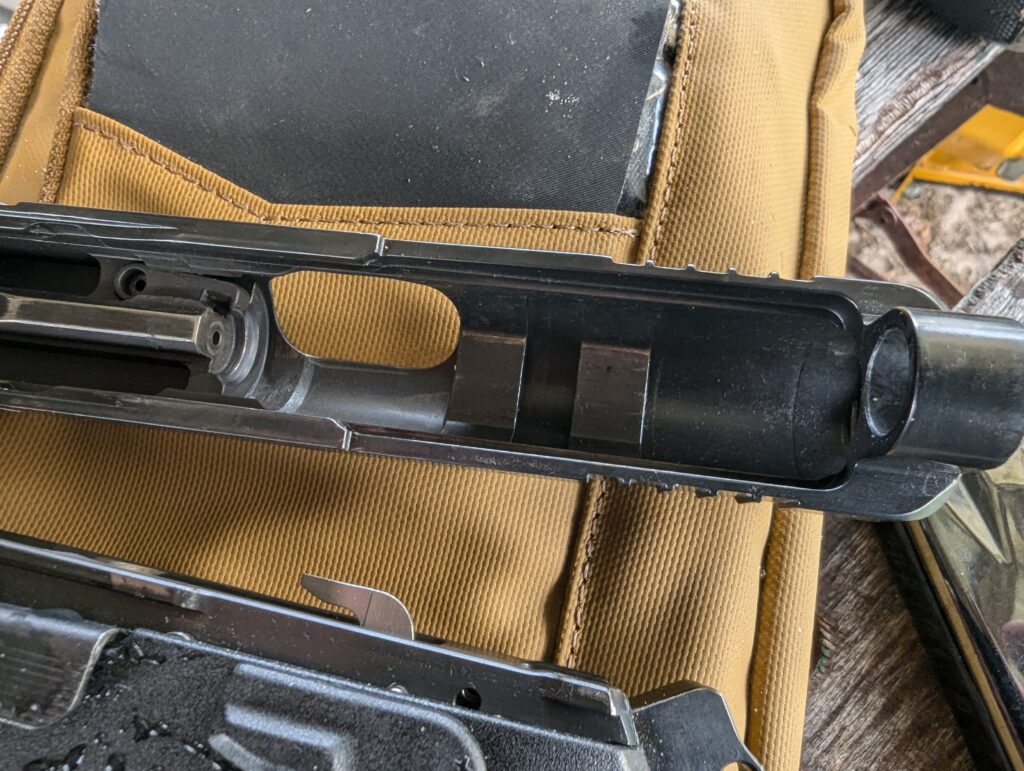
Advertisement — Continue Reading Below
The rotating barrel system used in most guns is also a short recoil system. The barrel rotates and moves rearward with the slide. It doesn’t cam downward or tilt upward. The barrel stays on the same linear plane and rotates. Most modern guns will have locking lugs that unlock as the barrel rotates. The barrel rotates in the opposite direction of the projectile.
Finding the Truth
To figure out if the rotating barrel reduces recoil, I grabbed the compact 9mm P1 and shot it side by side with the compact 9mm Glock 19. I took the Bill Drill as an influence but didn’t start from the holster. I just fired six rounds as fast as possible into an ISPC sized A-Zone. Timers and accuracy don’t lie, and the P1 presented a tighter group fired fractionally faster.
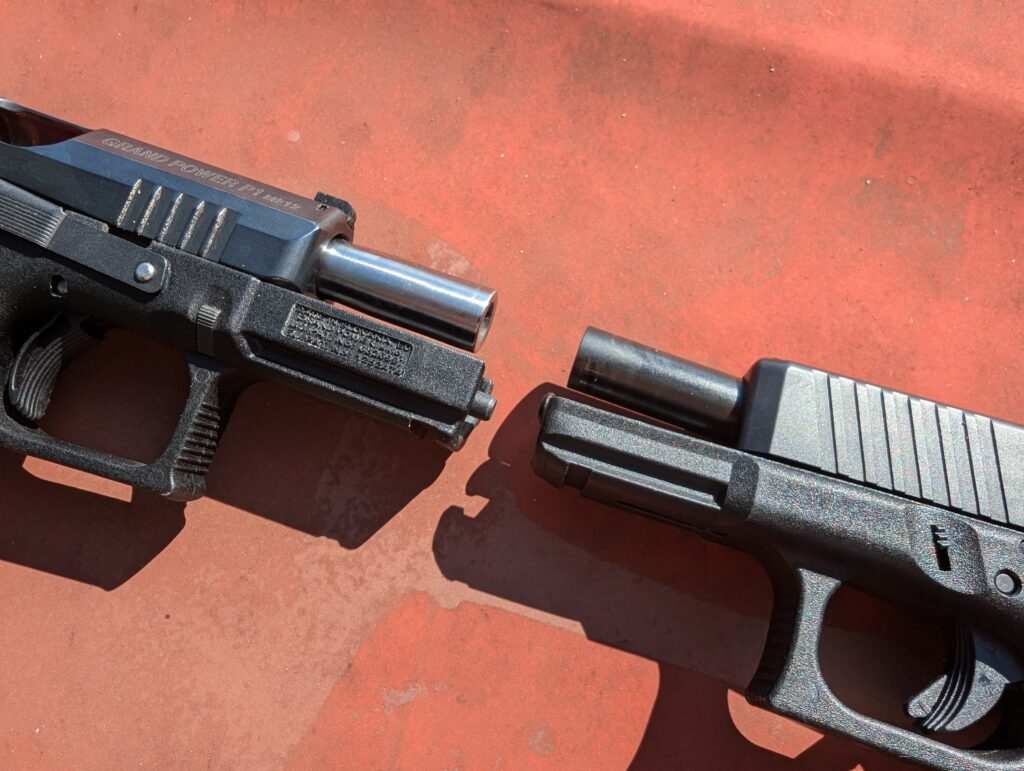
Advertisement — Continue Reading Below
From a side-by-side perspective, the difference is noticeable, especially when firing a long string of fire. The difference in recoil reduction is fractional. It’s not even equivalent to a compensator on a handgun. I don’t think a lot of casual shooters would even notice the difference between the two.
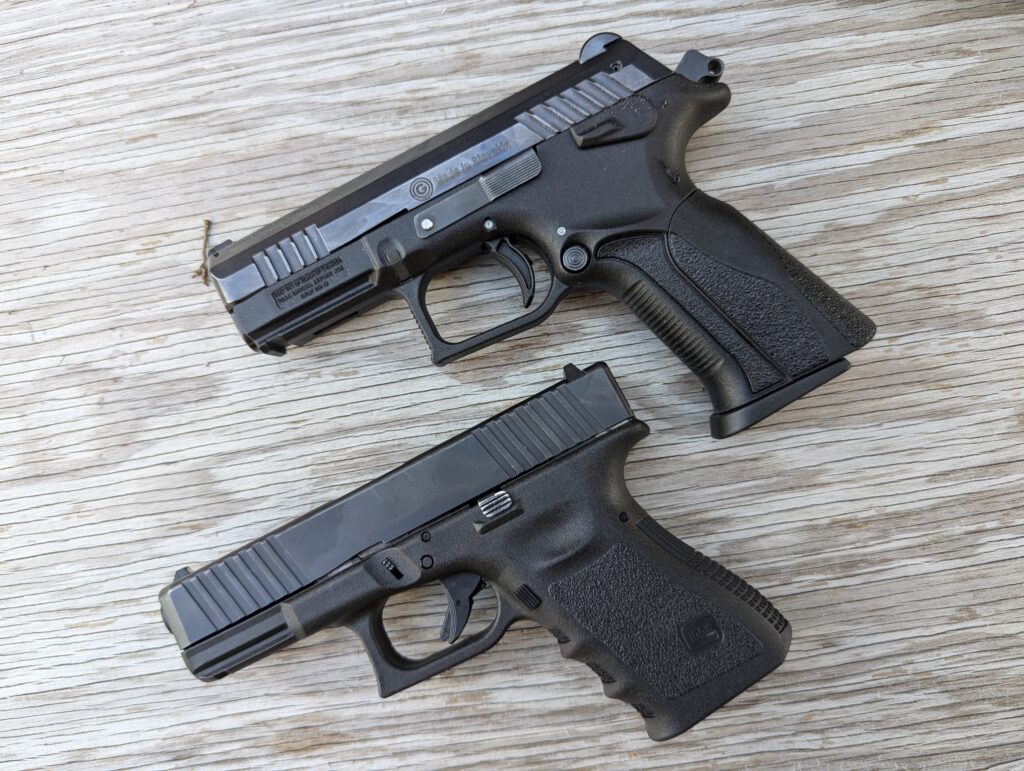
In fact, it’s probably going to provide high-level shooters with the most real benefit. I’m certainly not at that level, but I do feel that the P1 has less recoil than the Glock 19. There can be other factors that also affect this. We can talk about bore height, grip design, and recoil springs. I’d say when you compare the price points and designs of the handguns, they tend to be fairly equal.
Advertisement — Continue Reading Below
The rotational barrel design takes a bite out of recoil, even if it’s not the biggest bite.
Downsides To Rotating Barrels
There are downsides to these guns and the rotating barrels, one being price and complication. It’s not as easy to produce as a short recoil system. The gun also demands a wider slide for those recoil lugs. The slides on the Beretta and Grand Power aren’t dainty. It can also complicate suppressor use since your suppressor/Nielsen device relies on threads that are pitched in a specific direction.
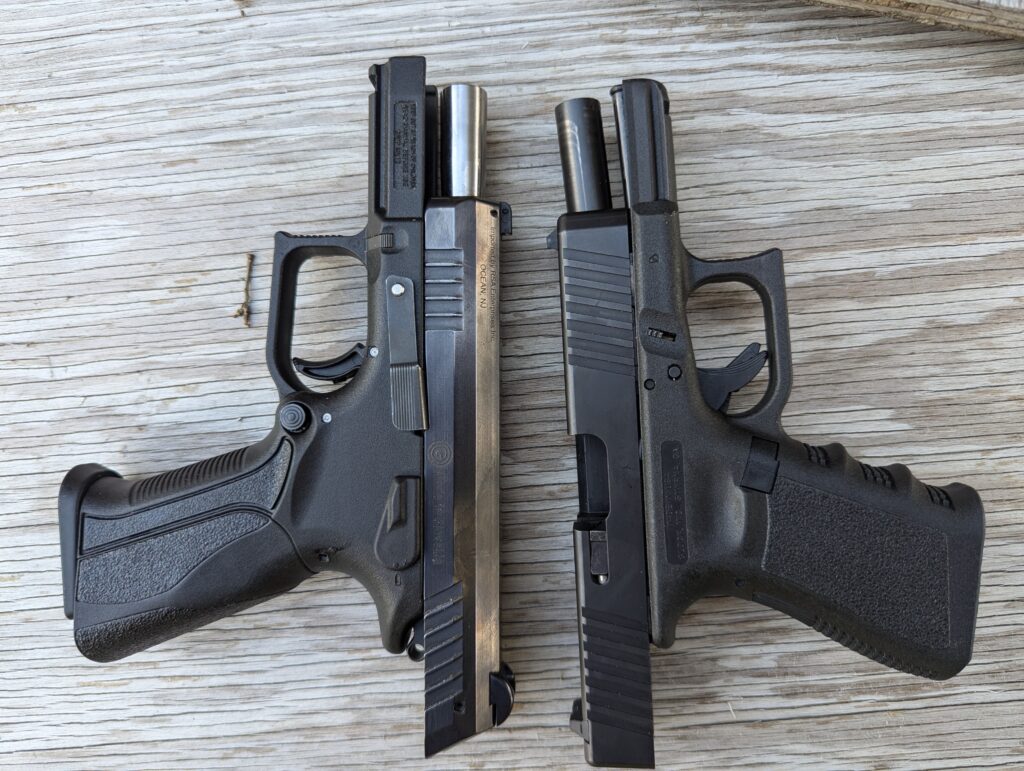
Advertisement — Continue Reading Below
I do think there could be a good reason to use a rotating barrel design for the incremental difference it makes. However, it takes more than a neat design to make a pistol successful. Maybe if Glock brings the 46 to the states, we’ll see a revival in such a system.




